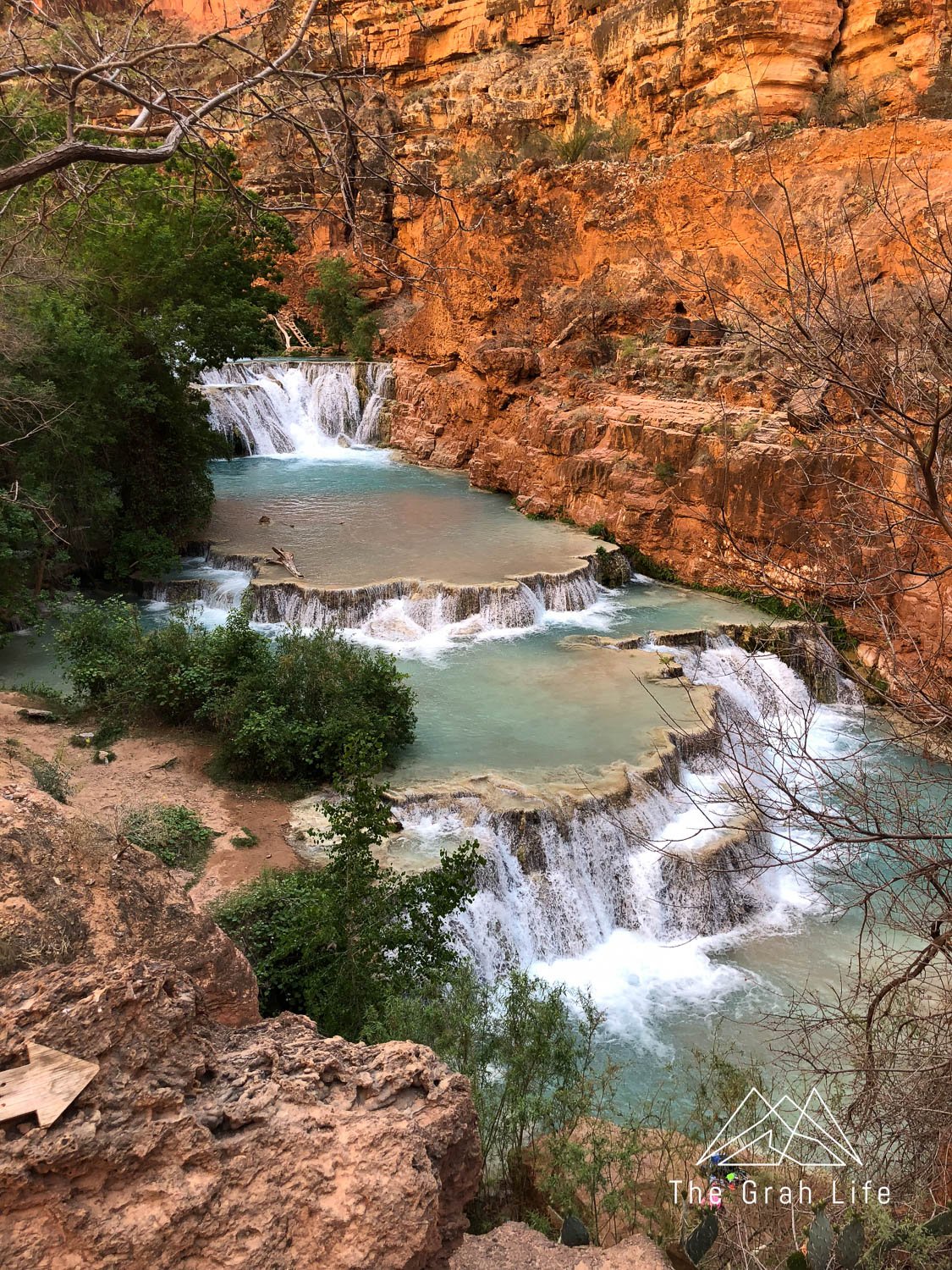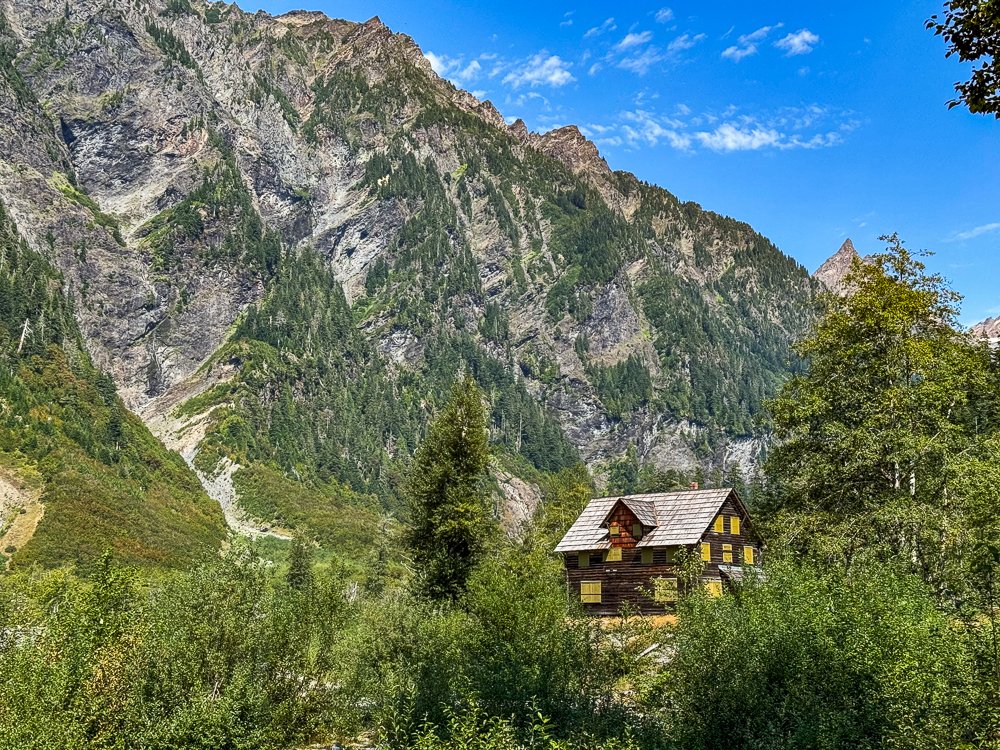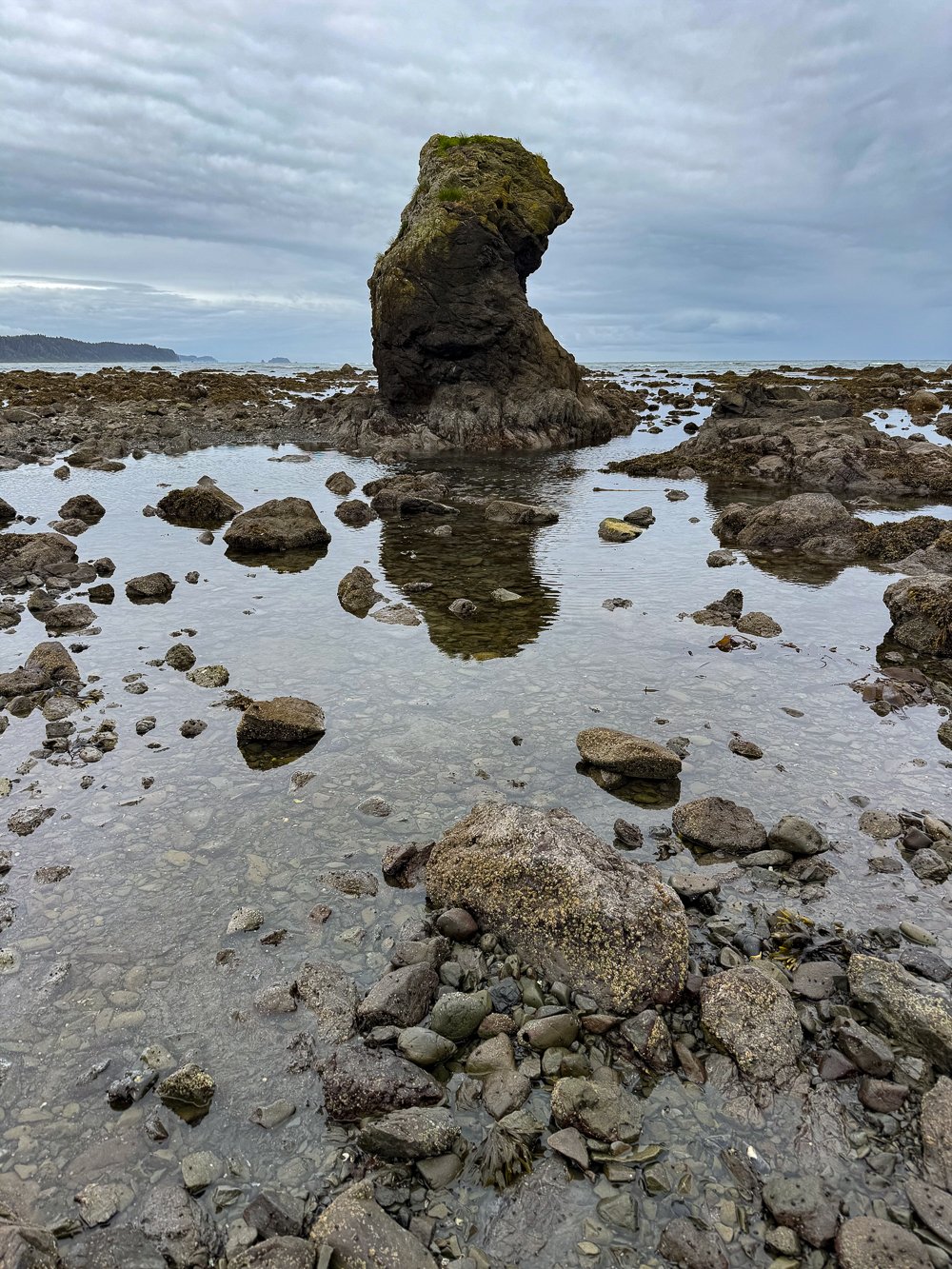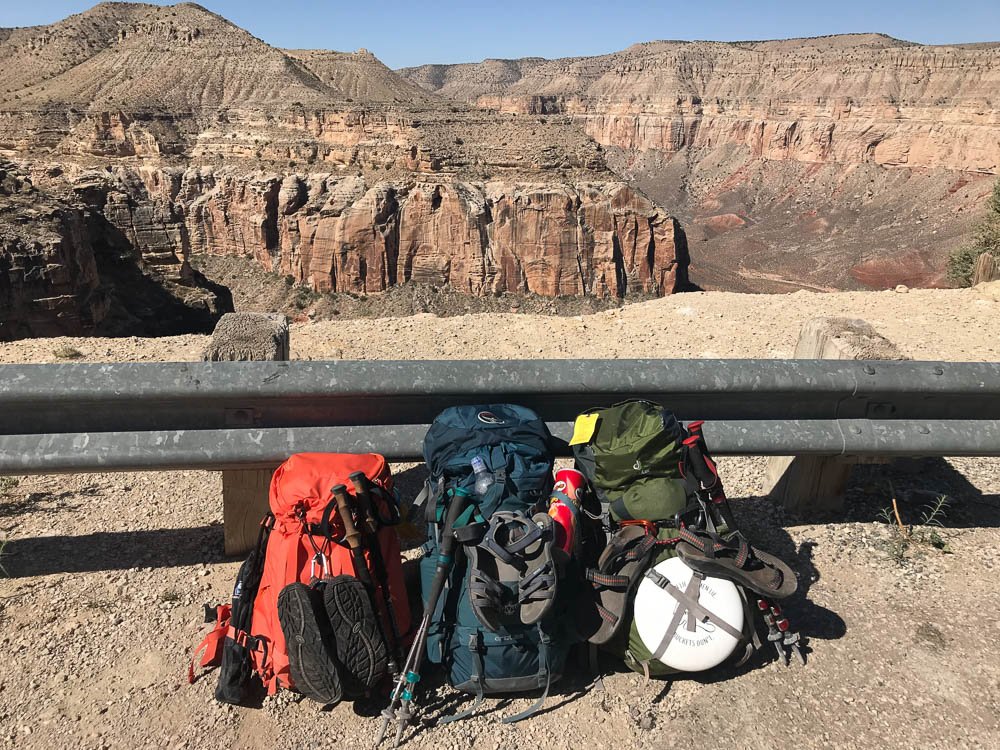Havasupai Camping and Lodge Permits Explained for 2025
We were lucky enough to get permits to visit in 2018, right before Havasupai Falls blew up in popularity. Back then, you had to reserve permits over the phone. Unfortunately, they released permits for the season all at once. The day they released permits, we called more than 60 times before getting through. We’d call, get a busy tone, hang up, and try again, knowing we were competing with thousands of people around the world.
Finally, on Meghann’s last try, she got through. She nearly panicked when she heard a voice pick up on the line. We’d thought ahead and planned what dates would work well for us, but in the end, we didn’t have much of a choice. Whoever was on the phone said their next availability was at the end of April — so much farther out than we’d anticipated. Without a pause, Meghann said she’d take it. Zach and our other group members would have to make the dates work!
Want to skip ahead? Click on the links below to jump to a section.
Where is Havasupai Falls located?
What if I need to cancel my trip?
Where is Havasupai Falls located?
Havasupai Falls is in the Grand Canyon on the Havasupai Indian Reservation, just outside of the Grand Canyon National Park. The closest town outside the reservation is Peach Springs, Arizona, on Historic Route 66.
How to get to Havasupai Falls
There are no roads leading to Havasupai Falls. Access to the Supai Village is done by hiking, or helicopter, by permit only. Day hikes are not allowed – all visitors must get permits in advance and spend the night in the campground or lodge.
How to get permits
The Havasupai Tribe grants about 100 permits per day, welcoming 30,000 visitors to Supai per year. Permits are reserved online nowadays, but they still sell out within minutes.
Reservations are available between February 1st and November 30th.
Presale reservations
Presale reservations for 2025 permits start on December 16, 2024 and end at 5 p.m. Arizona time on January 3rd, 2025. Although there are separate logins for each, presale reservations are available for both the lodge and the campground.
It costs $20 to apply per permit (one permit per person, up to 12 people per reservation), and you’ll have the option to select up to three desired reservation dates. Applying for the presale reservations does not guarantee you permits and this money is not applied to the cost of the reservation if your presale reservation is accepted.
Once the presale closes, the Tribe will randomly assign a limited number of reservations. Like other backpacking permit lotteries, applying earlier on in the presale won’t help your odds.
If you’ve been selected for presale permit reservations, you’ll be notified via email no later than Friday, January 24th 2025 and the total reservation payment will be processed at that time if you choose to accept the awarded date. You must choose to accept the awarded date and pay in full by January 24th.
The Tribe highly encourages you to have your potential alternate trip leader (PATL) filled in before this time. Once your permits are purchased they don’t allow changes, cancellations, or refunds.
The remaining permits will become available for purchase on February 1st, 8:00 am Arizona time.
Camping permits
Camping permits go on sale on February 1st at 8 a.m. Arizona time each year. To get a reservation, set up an account under the Havasupai Falls campground page in advance. Enter your credit card information in advance so you’re all set to go when permits go on sale.
On February 1st log in shortly before 8 a.m. Arizona time. Refresh your browser at 8 a.m. and select your dates and group size as quickly as you can. Often, you’ll get to the page for final payment only to have it glitch and send you back to start the process over. Be patient and keep trying!
Havasupai Lodge permits
Permits for the Havasupai Lodge go on sale each year on July 1st. The reservation process is the same as making a reservation to camp. Since there are only 24 rooms available, they book up quickly.
Native American and military discounts
Tribal members with a Certificate of Indian Birth (CIB) and members of the military can visit Havasupai Falls with a discount. You must go through the same reservation process, paying all fees upfront. Discounts are processed upon check-in with valid reservation and identification.
Permit costs will increase
Permits will likely continue to rise in price annually. Not only because of demand, but because of trash removal (seriously, pack out what you bring in!), trail management, environmental protection, flood mitigation, repair, and emergency rescues.
For reference, when we visited in 2018, the total cost of our three-night stay in the lodge was $300. Now, it costs $455 per person to camp or $2,277 to stay in the lodge.
Permit costs
Permits are sold for three nights/four days each. Making a shorter or longer reservation isn’t an option. However, you can start your hike in on any day of the reservation. No matter when you hike in, you must leave on the last day of your reservation. There are no refunds for unused permit days. We highly recommend using every day of your permit to experience as much of Havasupai Falls as possible. This itinerary has great suggestions on how to spend your time there.
Campground permits
Camping permits are charged per person. It costs $455 per person, for three nights. You can have groups of up to 12 on one reservation.
For more information on the campground, check here.
Havasupai Lodge permits
It costs $2,277 to reserve a room at the lodge for three nights. Each room sleeps up to four, and the cost is the same regardless of your numbers.
For more information on the lodge, check here.
What if I need to cancel my trip?
The Havasupai Tribe does not offer refunds, but if you need to cancel your trip, you can submit your permits to be resold on the Havasupai website. You’ll get a refund when someone else purchases the permits and transfers them to their own name.
The farther out you cancel your trip, the better odds you have of someone purchasing your permits. Selling permits outside the website is prohibited.
What if there aren’t permits left?
If you try to purchase permits and they’re already sold out, head to the cancellations/transfer page on the Havasupai website. This is where people resell permits they no longer want. This list is updated every day at 8 a.m. Arizona time, so it’s worth checking daily.
If you’re going with a group, choose a date from the transfer list that has enough permits for your entire group. If there are more permits than you need, purchase the lot, and try your luck at transferring the extras. Purchasing permits elsewhere is prohibited.
When to visit
Peak season
May to September
Havasupai Falls sees the most visitors between spring and fall. However, we don’t think this is the ideal time to visit. This is when temperatures are hottest, and it coincides with monsoon season (more on that below). Go if you’re willing to brave the heat and take your chances with possible rain between mid-July and early September.
Best temperatures
March to April and September to November
Early spring and late fall are the best times to visit. Temperatures are cooler, but it’s still warm enough to spend your day swimming.
Fewest crowds
December to February
Colder temperatures scare most visitors away during the winter months. However, the water maintains a consistent 70 degrees year-round. It’s warm enough for the brave to take a dip, but you won’t be soaking in it like you would in the summer months. It’s also not unheard of to have the sights to yourself during these times but expect to be chilled once the sun drops below the canyon walls.
Monsoon season
Floods can occur any time of year; however, monsoon season at Havasupai Falls is from late June into early September. During this time, there is a high risk of flash floods.
When this happens, visitors may be evacuated, and hiking in is prohibited. There are no refunds for trips being cut short. If they allow visitors to stay, those camping must camp on high ground. This means sharing space with others and sleeping on uneven ground.
If you visit after recent monsoons or heavy rain, the waterfalls will be a muddy brown for days, rather than the usual turquoise.
















